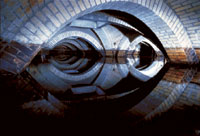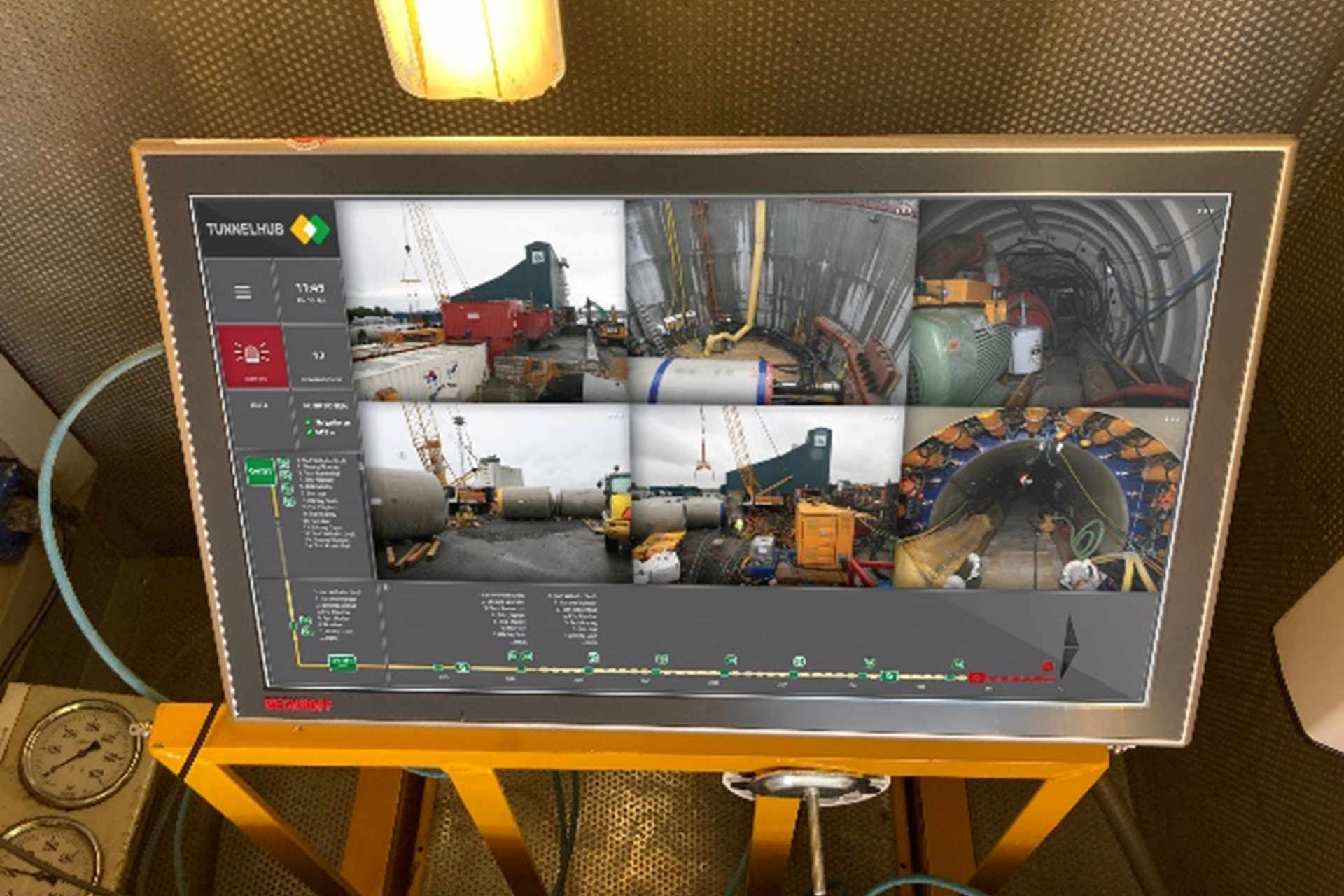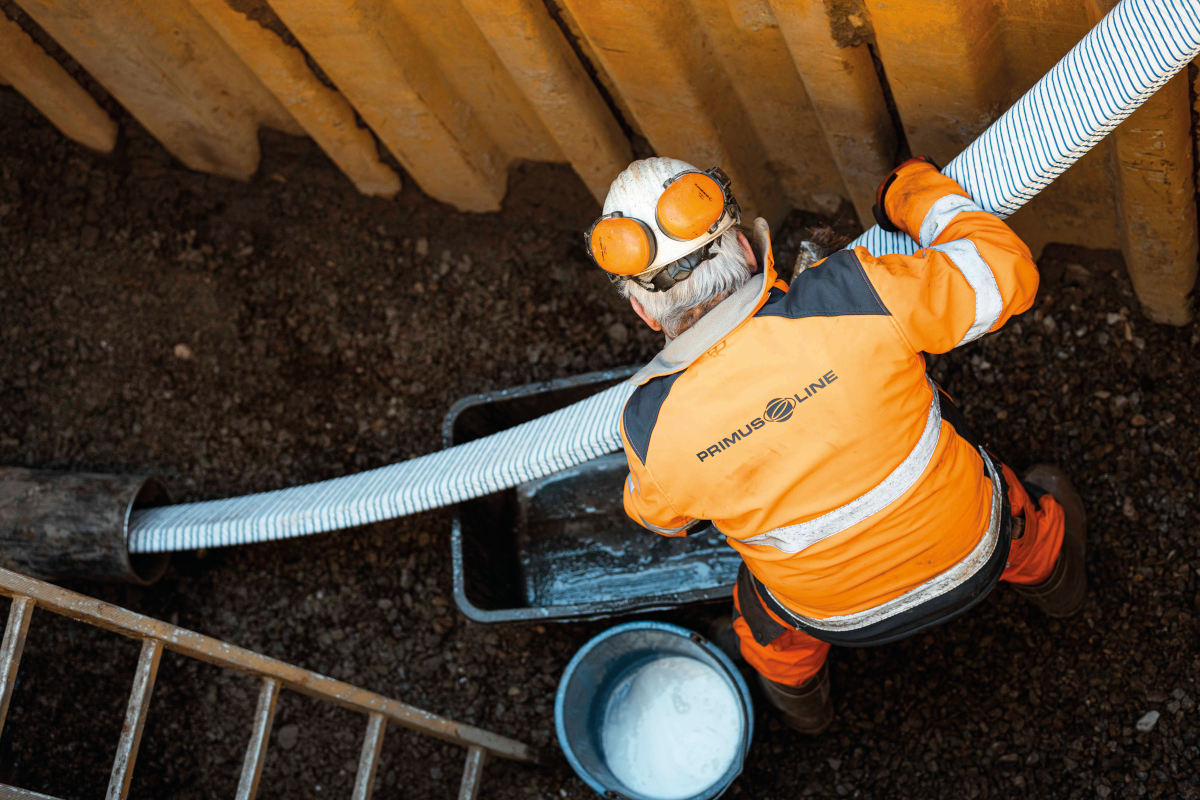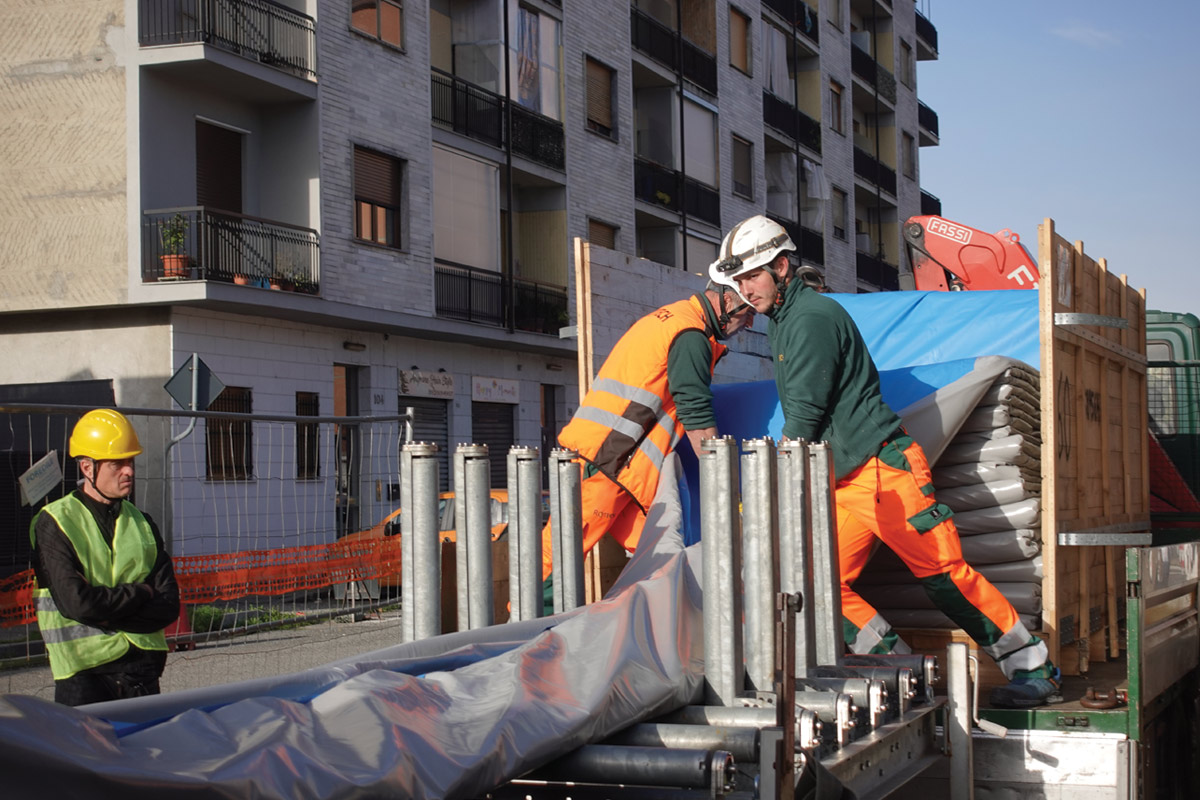Using Underground Construction Space
 Engineers and architects should make more use than they do at present of theunderground space for transportation, for production and storage facilities, forshopping malls, for culture and sports centers, for pipeline, cable and sewernetworks, for communication systems and for tapping energy sources. In manycases that is the only way to maintain space aboveground for good quality oflife for human beings, in an ecologically intact environment.
Engineers and architects should make more use than they do at present of theunderground space for transportation, for production and storage facilities, forshopping malls, for culture and sports centers, for pipeline, cable and sewernetworks, for communication systems and for tapping energy sources. In manycases that is the only way to maintain space aboveground for good quality oflife for human beings, in an ecologically intact environment.
We cannot increase the surface area of planet Earth. That is why it is vitalto look at “deep dimensions”:
• To generate awareness of the far-reaching technical, economic andecological opportunities for the future that arise from the undergroundspaces;
• To create a basis for the exchange of ideas and experience amongscientists, engineers, representatives of industry, architects, urban plannersand environmental policy-makers;
• To encourage political decision- makers torecognize and use the potentials of the underground space for urbandevelopments;
• To increase public interest in underground worlds, seeing howcities can be designed with improved quality of life, generating fascination andencouraging discussions, in order to promote acceptance and commitment; and
•To show how important it is to create international courses on the subject atuniversities.
There are 6 billion people living on Earth today. As early as 2043 — nineyears sooner than previously assumed — the figure is likely to pass the 9billion mark, with the world’s population is crowding more and more into thecities. In about 25 years, nearly two thirds of all human beings will be livingin towns and cities, especially in the developing countries, and there will beabout 100 cities in the world with populations of more than 5 million — many ofthem with no water, no electric power and only a makeshift roof over theirheads, but exposed to traffic chaos every day.
That is already everydayreality for many people in mega-cities such as Mexico City, Sao Paulo, KualaLumpur, etc. That is reason enough to think about how these urbanconglomerations should be developed and how, inevitably, urban planning shouldnot only include the space aboveground, but also underground construction space,in order to achieve environmentally acceptable conditions.
Looking into the depths also means looking into the future. The space belowthe surface of the Earth gives room to shape the urban environment and transportplanning for tomorrow. The growth of the big cities and increased trafficdensity are destroying the natural environment and threatening naturalbiodiversity. Innovative concepts have been put forward in discussion worldwide,and urgent appeals have been voiced by international organizations such as theUnited Nations Environmental Program (UNEP). But so far politicians and societyin general have shown little awareness of the potentials available below us;underground construction is mostly associated with high cost and that stopspeople from thinking about alternative means of construction and financing, andprevents the urgent action that is needed.
An initial global exchange ofideas was launched at the Rio Conference in 1992 and was continued at theHABITAT II conference on human settlements, held in Istanbul in 1996, and at theURBAN 21 conference on the future of cities held in Berlin in 2000.
The ideas put forward there indicate that the future of humankind will bedecided in the cities all over the world. There is no sign of any change inthat. But the trend toward ever larger cities is causing enormous environmentalpollution, especially in the developing countries. It has negative impact on thequality of air, soil and water. With increasing poverty, it also generates urbandestitution. That is why the private and public sectors have to work togethermore effectively in the future to generate a new quality of interaction and thusa growing and robust economy in the cities.
Resource Saving Urban Development for FutureOptions
Urban civilization, as known for the last 7,000 years or so,has always been based to a substantial extent on the performance of the builtengineering infrastructure. That infrastructure has comprised civil engineeringstructures that are mostly located underground, which are often technicallycomplex and are outside of the public view. In general, people notice onlyimposing buildings located aboveground. That may also be why urban constructionseems to have lost its innovative drive, particularly as society is notdemanding such innovation although the problem zones and the goal conflicts inurban construction are well enough known. But people often fail to realize thatthese really are the problems that set limits to the quality of the livingenvironment for human beings:
• Disruption of the countryside by extensive urban sprawl;
• Steadyincrease in the use of space, and growing mobility demands;
•Over-exploitation of the natural, non-renewable resources of ourenvironment;
• Climate damage and impairment of air, water and soilquality.
From now until 2015, the use of land in Germany for housing and traffic ispredicted to increase by 1 million sq m daily. That figure could turn out to beeven greater, due to development of additional traffic routes in response todemands for increased mobility of people and goods.
There is less and less overall planning of housing and urban developments —they are increasingly the sum of individual decisions on large-scale investmentsand individual building projects. Architecture and urban planning do no morethan simply realize spectacular individual buildings or revitalize individualdistricts; but even if that means building grass-covered earth houses, thisdevelopment is eroding the very roots of our civilization that is theorganization of social life in urban cultures in the framework of a renewableenvironment. The main complaint raised in public discussion is that urbandevelopment is not guided by social needs and is driven by businessopportunities rather than by visions of society.
The “city of the future” can be successful only if it transfers selectedlocations and utilizations into the underground spaces below areas currentlyused — for example, by building new marketplaces as the centers of commerce,culture and communication, below the existing centers. These spaces can beaccessed by rail systems for passengers and goods, with high-speed networks tointerconnect them and to link them with the major European cities.
A real-life example of the “Terra-City” of tomorrow is the Canadian city ofMontreal. Since the 1960s, the “Ville souterraine” has been developed there,below the historic city center and has become the world’s largest undergroundcity. Day by day it attracts 500,000 pedestrians to its 1,600 shops, its 200restaurants, its 34 cinemas and theatres and to its underground gyms and sportsstudios. The passages there have a total length of 29 km. That kind ofconstruction certainly costs money. But any comparison of costs with aconventional system has to consider not only the higher costs of undergroundbuilding, but also total energy costs, and to take account of the investment inthe future which is achieved by avoiding the consumption of housing space. Andsuch projects also show how economic policy can work with the constructionindustry to set up new alliances with the planning architects andengineers.
Use of Natural Resources
Future researchprojects should include economic and environmental feasibility studies toexamine whether:
• Geothermal energy systems can be a meaningful replacement for the energyforms used today and in the foreseeable future, while keeping the cost withinreasonable and competitive limits;
• The main obstacle to drilling at thepresent time can be eliminated by using an alternative drilling technique basedon flame drilling; and
• Drilling to depths of more than 4,000 m can alsopermit storage of radioactive waste in large drilling holes, e.g. with adiameter of 1.30 m.
Future Developments for UndergroundConstruction
Future technical developments include:
• Techniquesfor constructing hollow spaces below existing high-rise buildings
• Equipmentfor vertical drilling to build shaft structures to depths of up to 100 m
• Development of large tunnel boring machines for two-level traffic tunnels(with an outer diameter of more than 15 m) and for draining flood water
•Drilling for placement of geothermal probes
• Long-distance drilling toinvestigate construction ground and locate pipes
• Economically andenvironmentally acceptable sequestration of CO2 in porous underground rockformations
• Surveying for underground drives, including those with S-curves
• Microdrilling technique, e.g. for supporting slopes and for large-surfacegrouting and for making laterals for connection with sewers and pipelines
•Automation, e.g. for tunnel boring drives, as an alternative to conventionalspraycrete support
• Modular design of tunnel boring machines, including fordriving through rock
• Use of mixed gases for working at overpressure of upto 8.5 bar
• HDD systems operating with greater tensile forces (more than 400t)
• Curing drill flushing systems for HDD as an alternative to bentoniteflushing
• Optimization of foam and bentonite mixture to earth grouting forEPB shields
• Accurate plowing of pipes and cables
• Robot technology
•Drilling for sampling of gaseous, liquid and solid contaminants for onlineanalysis
• Construction and operation of utility corridors
• A recordingsystem for visualization and analysis of data for quality assurance and forpurposes of proof and for quality management in planning, construction andoperation of underground systems for the presence of human beings
•Establishment of specialist information systems as knowledge bases for masteryof high-technology applications
• Drafting of construction contracts Highlyqualified specialists are necessary for the realization of these innovativetechnologies. The International Society for Trenchless Technology (ISTT) iswell-advised in the future to take an active part in the competition with otherassociations in the education of the younger generation.
Rolf Bielecki is the former chairman of the German Society of TrenchlessTechnology, a position he recently retired from. He is a founding member ofISTT.




